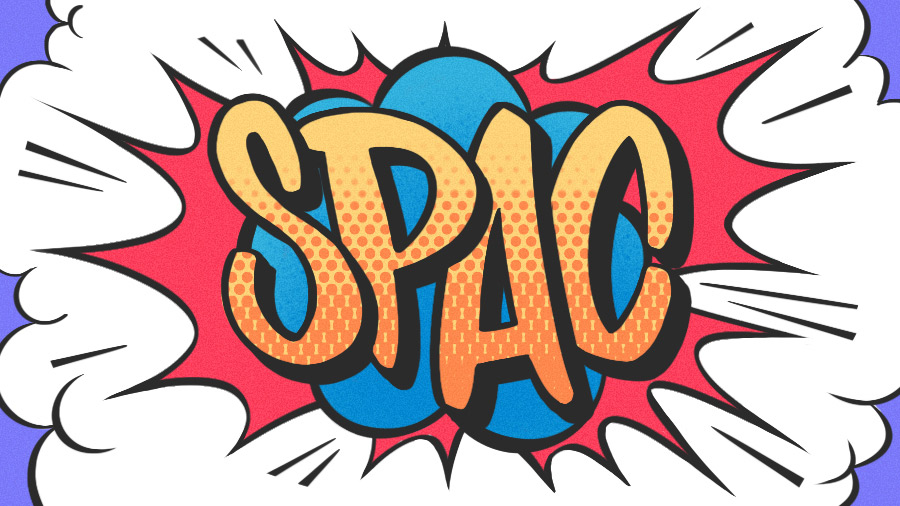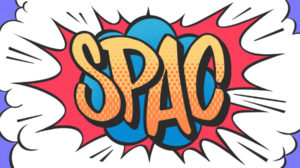Every time it seems like the SPAC bubble has burst, a slew of companies say they’re going public via a blank-check merger.
Subscribe to the Crunchbase Daily
After experiencing a slowdown earlier this year, SPAC deals are still happening and the number of companies going public through a SPAC make up a significant portion of the overall total of companies that went public this year.
We ran the numbers to compare the median age of a VC-backed company going public via SPAC versus a VC-backed company going public through an IPO or direct listing. As it turns out, companies going the SPAC route are around three years younger than companies that went public through an IPO or direct listing.
For this analysis, we included U.S.-based venture-backed companies that went public this year on the Nasdaq or New York Stock Exchange. We excluded biotech companies, which frequently go public very early on, as well as most companies that raised venture funding before being acquired by a private equity firm and then taken public again.
The median founding year for VC-backed companies that went public in 2021 through a SPAC was 2013, while the median founding year for VC-backed companies that went public through a traditional IPO or direct listing was 2010.
In fact, more than a dozen VC-backed companies that went public through a SPAC this year were founded in 2017 or later. By comparison, technically only one VC-backed company that went public through a traditional IPO or direct listing was founded after 2017—a.k.a. Brands, which was launched by Summit Partners with some pre-seed funding in 2018 before acquiring a host of digital brands like Princess Polly.
Some of the youngest VC-backed companies to go public through a SPAC this year include Archer Aviation (founded in 2020), Bakkt (founded in 2018), and Hyzon Motors (founded in 2019). Archer, which is developing electric-powered air taxis, and Hyzon, which is developing hydrogen fuel cell EVs, both operate in capital-intensive spaces. It takes a lot of money for an EV company to develop its technology, and SPACs provide a way for them to raise capital fairly quickly, even when they don’t have a product on the market.
Reasons to go the SPAC route
There are a few other reasons companies that go public via the SPAC route are more frequently young companies. For one, SPACs allow companies to use financial projections as a marketing tool as the company goes public—something that’s especially useful for younger companies.
“The great advantage of a SPAC IPO more than anything else is the ability to market your public listing based on its three-year forward revenue and forecasts, whereas a traditional IPO has to only look backward,” said Louis Lehot, a partner at the law firm Foley & Lardner. “So for newer companies that have a shorter history of revenue or are pre-revenue, a SPAC is going to be an easier path than an IPO. It’s also a riskier path and a path with a future trading market with an overhang of so much common stock people are trying to sell.”
With SPACs, investors are relying on the reputation and strength of the SPAC sponsor and the broad intended goals the SPAC is focusing on, rather than the company’s historical performance, according to Patrick Healey, president and founder of Caliber Financial Partners.
With a traditional IPO, “you have to have some track record, some history of revenue, and in some cases earnings projection in order to attract the interest of investors to participate,” Healey said. “With SPACs it’s quite a bit different.”
That’s why you see more pre-revenue companies, including a number of EV companies, go public through a SPAC rather than through an IPO. And for pre-revenue or early-stage companies, the ability to tap into sometimes hundreds of millions of dollars is an attractive option, according to Healey.
“These are much earlier-stage companies, a lot of them are pre-revenue so they may not even generate revenue yet, so it’s a different type of an investor in a bit more established, well-marketed IPO, and with that comes a lot more volatility,” he said. “SPACs over the past six or seven months have been under a lot of pressure.”
The record number of SPACs that have formed and gone public also means there are a lot of blank-check companies that are hunting for targets, per Michael Torosian, a partner at the law firm Baker Botts.
“You’ve got a ton of SPACs and they are looking for targets and at some point there’s a finite number of targets,” Torosian said. “So you can see these SPACs taking potentially more risk and expanding their targets to include earlier-stage companies.”
Even anecdotally, it seems like earlier-stage companies are thinking about their options to go public earlier, according to Torosian.
“It used to be, we talked about a Series A, then a Series B, then a Series C, and then one day going public through an IPO or being acquired,” Torosian said. “So that was the traditional way. But those conversations were linear, they were done over a relatively longer period of time. Whereas nowadays, I will talk to a company literally about a seed round and maybe a series of venture rounds and then eventually a public offering in the same discussion.”
Crunchbase Queries Used In This Article
Related articles:
Illustration: Dom Guzman

Stay up to date with recent funding rounds, acquisitions, and more with the Crunchbase Daily.







![Illustration of stopwatch - AI [Dom Guzman]](https://news.crunchbase.com/wp-content/uploads/Halftime-AI-1-300x168.jpg)
67.1K Followers